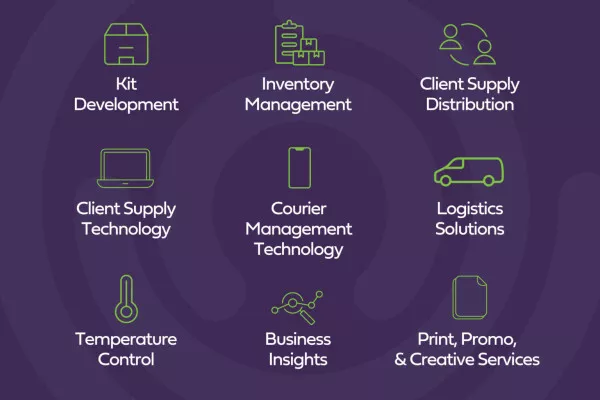- News
- The Crucial Role of Quality Control in Healthcare Logistics…
News
The Crucial Role of Quality Control in Healthcare Logistics [And 5 Ways to Maximize Efficiency]
Our work environments have changed over the last few years. We are all handling more, and managing virtually. On-site facilities that produce medical products and equipment require safe handling while also ensuring compliance standards are met.
But how do you optimize your day-to-day operations while exceeding quality control benchmarks? Let’s take a look at the crucial role quality control plays in healthcare logistics and explore five ways to maximize efficiency in this critical area.
What is Quality Control in Healthcare Logistics?
Quality control is the cornerstone for healthcare logistics companies. It involves implementing standardized processes, rigorous monitoring, and continuous improvement measures to maintain the integrity, efficacy, and safety of medical products throughout the healthcare supply chain.

1. Delegate Clear Roles
In today’s fast-paced healthcare industry, efficient and reliable logistics operations play a vital role in healthcare supply chain management. To improve processes, organizations should appoint individual team members to specific roles and delegate tasks accordingly.
For instance, quality managers and quality supervisors should oversee your product quality maintenance throughout the entire cycle. They should work closely and collaboratively with quality control inspectors, who review all products and procedures and note potential inaccuracies or inconsistencies. Additionally, consider streamlining ISO consultation to a single, centralized partner, rather than having individual ISO consultants at each operational location.
2. Outline Production Processes
Quality management teams should define and enforce clear procedures for better control and validation of production activities. Each employee should have an in-depth understanding of work instructions, documented procedures, and reference materials linking back to company guidelines and procedures. Clearly outlining your processes and best practices will ensure faster and more accurate task completion in your production lines, meaning properly identified and protected items are delivered throughout the manufacturing and shipping cycles.
3. Improve Product Identification
Your teams should assign unique identifiers to finished products, along with manufacturer, internal, and customer part numbers using reject tags, acceptance labels, or work order numbers. In addition to product labeling, companies can assign tracking tools to each employee for better visibility into who performs each inspection or test. With more widespread insights, businesses can make informed and efficient staffing, production, and executional decisions. This process should account for more seamless product identification and traceability, from material receipt through final shipment.
4. Tighten Inspection
In a fully compliant, quality-controlled medical environment, no product should be processed or used until it has undergone a thorough inspection. While it can be easy to move materials forward to maintain a fast-paced workflow, the long-term risks of doing so far outweigh the short-term benefits.
Medical businesses should establish clear “pass/fail” guidelines for incoming products. Unless a particular item meets all authorized documentation, it should be isolated and processed separately. This extra diligence will prevent potentially defective supplies from entering the field, and ensure that medical procedures move forward without compromise.
5. Ask for an External Assessment
It can be challenging for employees within a repetitive and familiar work environment to recognize quality control deviations. As a result, it’s not only okay but recommended for businesses to leverage external resources and gauge the efficiency and security of their operational strategies.
Direct customer feedback is one of the most valuable tools for the early detection of potential quality problems and risk management hurdles. Managers who take time to directly engage with customers through surveys, periodic meetings, or comment forms will be better prepared to take corrective and preventive actions before problems escalate.
Consider bringing in a third-party quality management auditor as well. These individuals or teams can check adherence to required customer and/or regulatory requirements without bias, and identify gaps that internal teams may otherwise overlook.

Maximizing Efficiency in Healthcare Logistics
Quality control is fundamental for success in any business environment. In the medical and specimen management industries, compliance with regulations such as ISO 13485:2016 not only builds customer trust but also delivers better results.
Analyzing data and performance metrics can identify bottlenecks, areas for improvement, and trends that help optimize logistics operations. By leveraging technology and data analytics, healthcare providers can proactively identify potential issues, forecast demand accurately, and implement process enhancements to maximize efficiency and minimize errors.
Take advantage of simple but effective opportunities to refine your operations, and create a better model that will help your business thrive, along with your partners and their patients. Contact us today to schedule a demo!
About BioTouch
BioTouch is a single-source, international provider that brings a higher level of care to healthcare delivery, spanning medical kit and supply distribution, printing, logistics, temperature control, and last-mile services.
Our solutions help eliminate silos and give laboratories and hospitals all the critical intelligence needed to create new efficiencies across the entire organization, allowing you to focus on what you do best: patient care.
